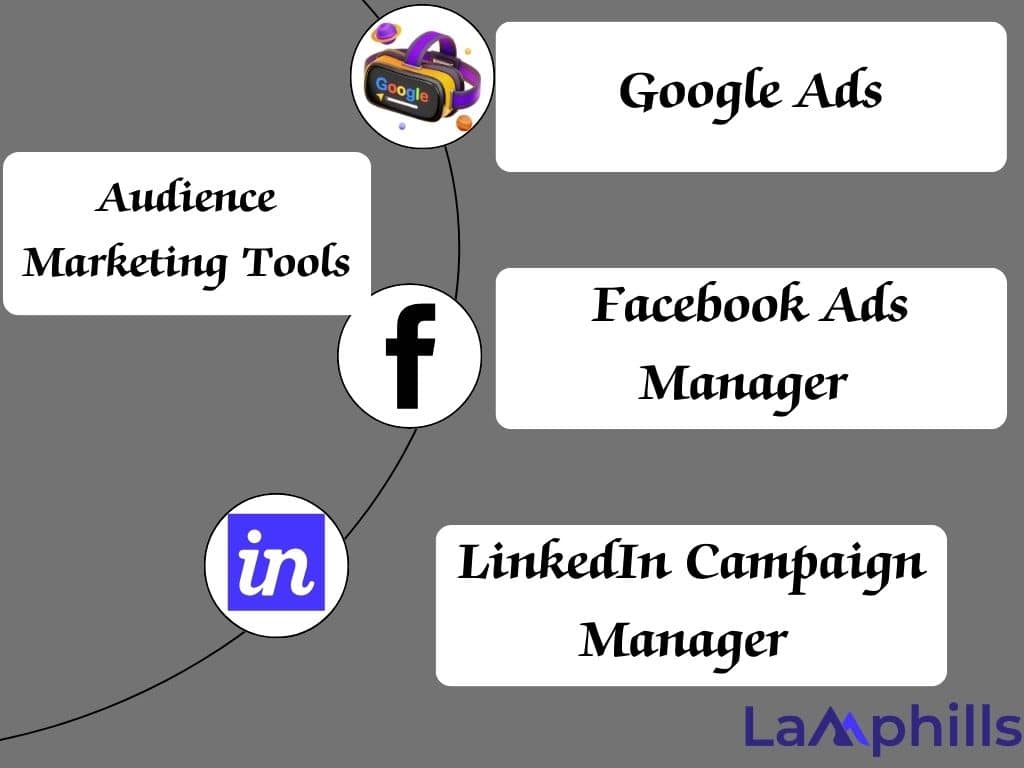Reaching the right audience for your brand is not just a challenge but a critical priority. Audience targeting means using data to break down or separate your customers by population segment or interest to connect with the target audience. Understanding your target audience is your key to success. So, if you are unsure what audience targeting is, here is what you need to know. Let’s get started!!
Keypoint
- Audience targeting involves dividing customers into segments based on demographic or interest data to connect with specific groups and enhance campaign alignment with customer lifestyles.
- Effective audience targeting requires you to consider demographics like age, income, interest, location, gender, customer values and motivations to ensure marketing resources are used efficiently.
- Audience targeting prevents wasted ad spend. It allows for precise marketing efforts and improves ROI by focusing on audiences more likely to convert.
- Businesses must identify and segment their audience, activate campaigns using personalized data, analyze performance, and optimize strategies for better targeting.
- Tools like Google Ads, Facebook Ads Manager, and LinkedIn Campaign Manager enable precise audience targeting and have proven success in various campaigns, from local businesses to B2B companies, by improving visibility, engagement, and conversion rates.
Audience Targeting
Audience Targeting separates customers into segments based on interest or demographic data. If your brand wants to reach or connect with a specific group of individuals or demographic, audience targeting is a suitable strategic marketing method. Audience targeting is an effective method that marketers should apply to plan campaigns that can align directly with their customers’ lifestyles. To achieve this, you will consider some helpful demographics: age, average income, interest, location, and gender. On top of that, you must consider the values and motivation impacting a customer’s buyer’s journey. This method ensures that you reach the right people for lead generation by using your marketing resources and time in the right places and for the right people.
Understanding Audience Targeting
Let me share my personal experience that will help portray the power of audience targeting. I was once tasked to create a content marketing campaign for a skincare brand launching a new anti-ageing product line, RadiantGlow Skincare. Initially, the brand wanted to target a broad audience, but I recommend we begin by analyzing customer data and creating detailed buyer personas.
Later, we discovered that the general audience are women aged 18-65; so the new product line will connect mostly with women aged 35-55 concerned about ageing and being active on social media. In that case, we customized our social media updates and email newsletters to the demographics, focusing on RadiantGlow’s benefits and customer feedback. After everything, the results were outstanding, we had increased website traffic, product inquiries, and sales.
Another benefit of audience targeting is that you won’t need to waste ad spend on an audience that will not deliver high ROI. When you apply this method, think of the type of audience you want to reach for a specific product or campaign and also the demographics you need to focus on. At first, you prefer to refer to your existing buyer personas. Despite that, it’s important to note that your existing buyer personas are not constantly the same as the audience you try to target for a particular product or campaign.
Read Also: 7 Unbelievable Audience Behavior Hacks That Will Skyrocket Your Conversions Overnight
Why is Audience Targeting Important
- It enables businesses to increase the impact and effectiveness of their efforts. Marketers can customize their message, products, and services by identifying a target audience to meet that demographic’s unique needs and preferences.
- When audience targeting is effective, businesses can allocate their resources more effectively, concentrating on channels and platforms where the target audience is primarily active and not investing in unsuitable audiences. You will experience a higher return on investment because you directed marketing efforts to individuals who are more likely to transform into your customers.
- Audience targeting promotes the creator’s personalized and impactful experiences that connect the brand with the customer. It promotes a stronger connection between a brand and its customers because you understand the target audience’s demographics, behaviours, and motivations. So, businesses can create messaging that addresses the concerns and goals of those individuals.
- When you apply this effective method of audience targeting, your business will focus its marketing efforts on the right audience, which will, in turn, enhance ROI and build a stronger connection with your customers.
Read Also: My Best Strategies For Audience Engagement With Free Template
What Is the Process to Achieve Effective Audience Targeting
In digital marketing, it is essential to target your audience effectively. This allows marketers to enhance engagement, optimize resource allocation, and ultimately boost returns on investment. This strategy will enable businesses to connect more with their customers, personalizing messages and experiences to meet specific needs. I have described some processes for achieving effective targeting. Let’s move forward with the process.
#1. Customer Group identification
This is where you start identifying your existing customer base. You can do this based on the customer’s demographic information, initial shopping habits, or any other data you need.
#2. Audience Segmentation
Use tools like data management platforms (DMP) or customer relationships management (CRM) to separate your customers into segments. You can divide your wide customers into smaller and specific segments. This segmentation requires the customer’s demographics, initial customer purchasing habits, online behaviour, and more
#3. Campaign Activation
When activating a campaign, apply the segmented data using personalized engines, a content management system, or ad servers. This step will ensure that ads or content are customized and valuable to each audience segment.
#4. Performance Analysis
Use analytics systems to feed the campaign data. You can use Adobe Analytics or any other suitable analytics tool to assess how well the ads or content performed with the target audience segments. This can be done by evaluating metrics that align with key performance indicators (KPLs)and business goals.
For instance, As a content writer for a business consultancy, I managed a marketing campaign to promote engagement on our newly launched blog. Initially, our page views were high, but the engagement metrics, such as the time visitors spent on the page, were low. I used the analytics system, which helped me discover that many visitors were on mobile devices, and our blog wasn’t mobile-friendly. After optimizing the blog, I realized that the engagement metrics significantly improved.
#5. Optimization and Refinement
You will need to analyze the performance data to identify areas of improvement if the campaign doesn’t meet its expectations. When doing so, look for patterns or common characteristics among segments that did not convert. Use this understanding to refine your content by targeting requirements for the content or audience. For example, if a large audience, such as females aged 28-49, has a low conversion rate, identify the specific parts or sub-segments within this group that converted and their common traits.
#6. Retargeting and Strategy Adjustment
Here, you create a new segment of people who did not covert and analyze their behaviour. Also, discover other products or content they interacted with during their visit. Use these insights to inform your next activation strategy. In this case, you may decide to present a different product or content that aligns more closely with the observed interest of the non-converting segments
#7. Continuous Improvement
This process entails continuously monitoring the performance of the segment of people you have not converted. Here, you refine the audience segments and adjust your strategies based on your last data and insight to ensure the effectiveness of your targeting efforts.
I have provided a buyer persona template that will help you to understand your target audience deeply and ensure that your marketing efforts are precisely tailored to their needs and preferences.
Lamphills Buyer Persona Template
Read Also: Local Advertising: 10 Best Free and Paid Local Advertising Ideas For Small Business in 2024
Audience Targeting Tools
The following are audience targeting tools you can use to find your target audience. These tools allow you to know where your audience are and to position yourself where they already are:

Google Ads
Google Ads Is a powerful tool for targeting the audience in digital advertising. It enables advertisers to create significant targeted campaigns based on customers’ demographics, interests, and behaviour. Google Ads offers numerous targeting options, like keyword location and device targeting, and displays ads across Google’s extensive networks, which include websites, mobile apps, and YouTube. This platform offers relevant insights and analytics to optimize campaigns and improve targeting strategies that promote accuracy and effectiveness.
Success Story
I use Google ads to target potential customers effectively. I remember a small shop owner, Michael who was struggling to build an online presence for his shop, Artisan Treasures Boutique some time ago. Although he had a fantastic product, he lacked the visibility to drive sales. When I suggested Google ads for him, he started by identifying his customers’ key demographics and interests. From choosing keywords that resonated with his target audience and setting up based target reach in local areas, this audience targeting tool highlighted the product’s unique features after crafting a compelling ad copy. In the end, it was suitable for the needs of potential buyers.
Tip: Additionally, while using the Google ads tool, start with a small and manageable campaign that will help you understand how your audience with your ads. Also, the trade advantage of ad scheduling is always there to display your ads when your target audience is active.
Facebook Ads Manager
This is another effective audience-targeting tool that helps businesses target their audience accurately. It allows advertisers to create custom audiences based on demographics and behaviours to ensure that ads are presented to the most relevant audience. Secondly, the lookalike Audience feature helps to enlarge your reach by finding users similar to your existing customers. If you are into advertising, you can control where your ads appear to help you optimize visibility on platforms like Facebook News Feed, Instagram, and Audience Network.
While retargeting those with high conversion chances, you’ll notice that Facebook Ads Manager offers comprehensive user data. This information helps advertisers better understand their target audience. Many success stories, such as that of a clothing brand, highlight boosted sales through this audience-targeting tool.
Success Story
Additionally, a local restaurant reached a specific location using the Facebook location targeting feature, increasing foot traffic and revenue. After reading all these success stories, you will agree that Facebook Ads Manager is a tool for audience targeting that helps you effectively achieve your specific campaign goals.
LinkedIn Campaign Manager
This is another influential audience-targeting tool for digital advertising. It allows advertisers to determine their target audience based on various standards such as job title, industry, location, and company size to enable accurate targeting. Additionally, this platform provides advanced analytics and reporting capabilities
ies that help advertisers track their campaign performance to make data-driven optimization. To reach the desired audience, this tool offers features like demographic targeting, which include Age, gender, location, and interest. Also, their behavioral targeting feature is based on the user’s previous online activities. Advanced options like the LookAlike targeting feature assist the user in discovering new potential customers similar to the existing ones. I use these features to ensure that my messages are delivered to the right audience at the right time, and it boosts my campaign success.
Success Story
Through research, I have a record of many success stories achieved by utilizing the audience targeting tool for digital advertising. I achieved excellent results using LinkedIn’s robust targeting capabilities, which helped me reach my desired audience. Another success story includes a B2B software company that used LinkedIn as a campaign manager for audience targeting in the technology sector. This led to an improvement that significantly increased lead generation and conversion.
Again, this success story involves a financial services firm that effectively reaches high-net-worth individuals because they target specific job titles and industries. Now that you have read all these success stories, you will agree that LinkedIn Campaign Manager is a tool for audience targeting. It helps you achieve your specific campaign goals in audience targeting and deliver tangible outcomes that maximize advertising ROI. See the video below.
What Are the 4 Target Audiences?
A target market is the customer profile to whom a product is most likely to appeal. The profile considers four significant features of that person: demographic, geographical, psychographic, and behavioral
What Is an Example of a Target Audience?
A target audience is an aspect of the overall target market. It is defined by common traits, including demographics, psychographics, behaviors, and hobbies. For example, a fitness brand’s target audience could be women aged 25 to 40 interested in health and wellness.
How Are Audiences Targeted?
Your target audience is the consumers who want your product or service, meaning they should see your advertising campaigns. The target audience may be determined by age, gender, income, location, interests, or other criteria.
How Do You Create Audience Targeting?
- Subculture.
- Use Google Analytics to learn more about your customers.
- Create a reader persona to target blog content
- Look at social media analytics.
- Use Facebook Insights.
- Purchase intention.
- Interests.
References
Related Articles
- 7 Brand Storytelling Techniques That Captivate Audiences
- Understanding Your Customers: Advanced Techniques in Audience Analysis
- Step-by-Step Guide To How I Create a Successful Programmatic Advertising Strategy
- Top 11 Social Media Marketing Agencies for Small Businesses I Recommend in 2024
- What Does a SEM Specialist Do? Job Description for 2024






